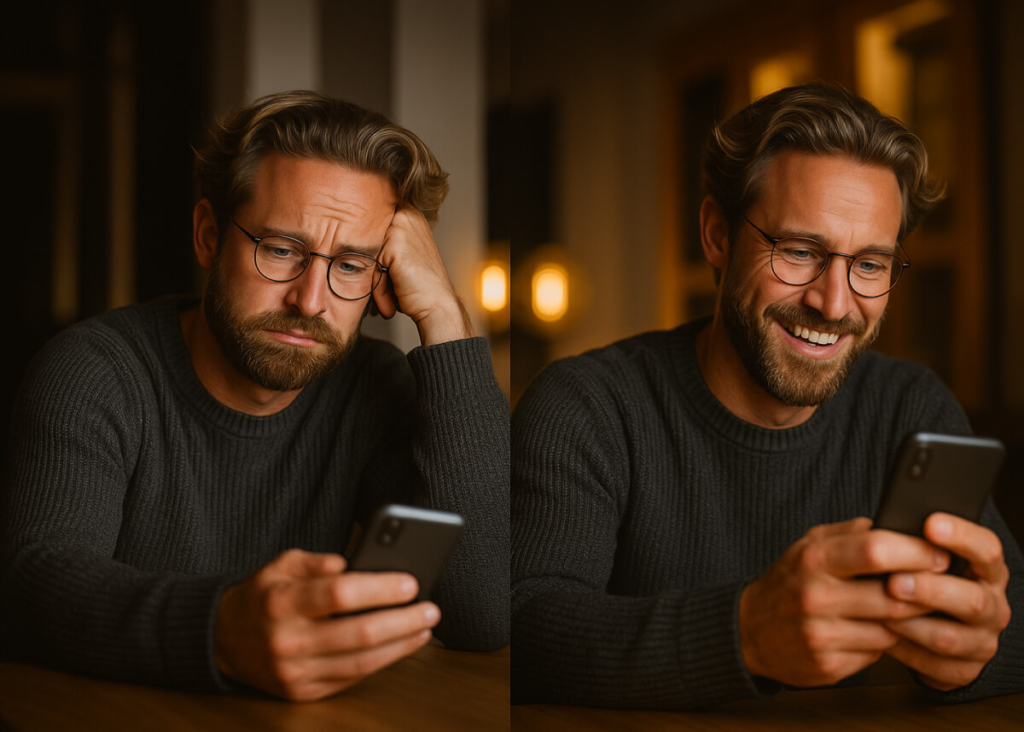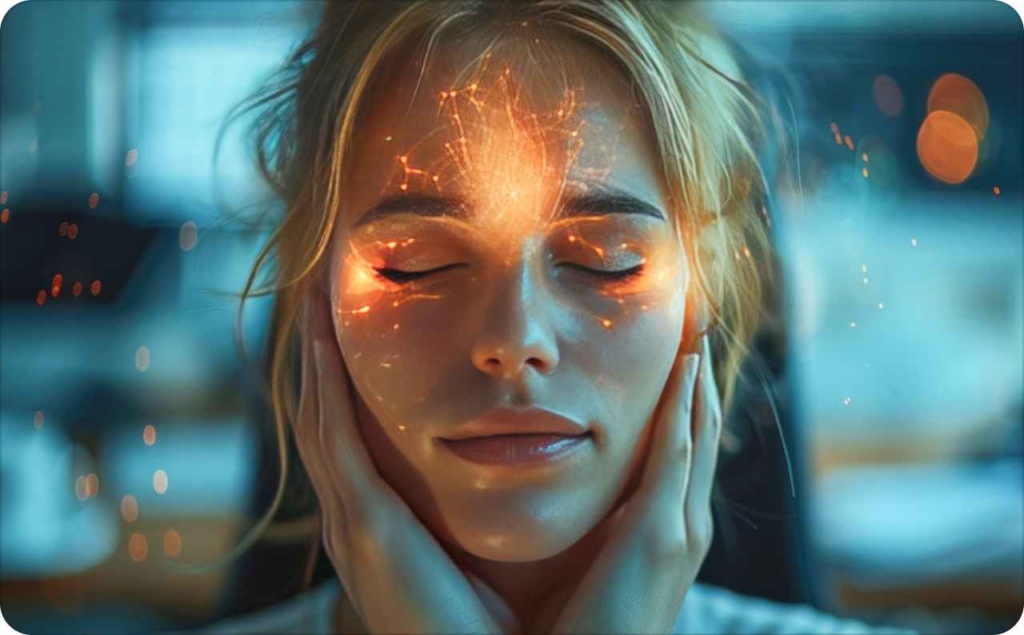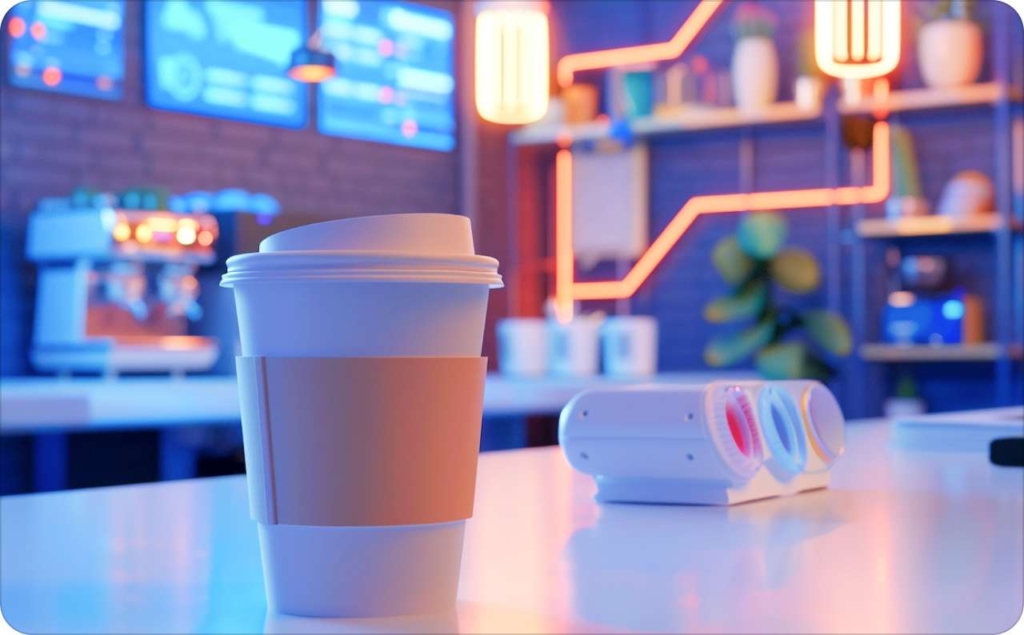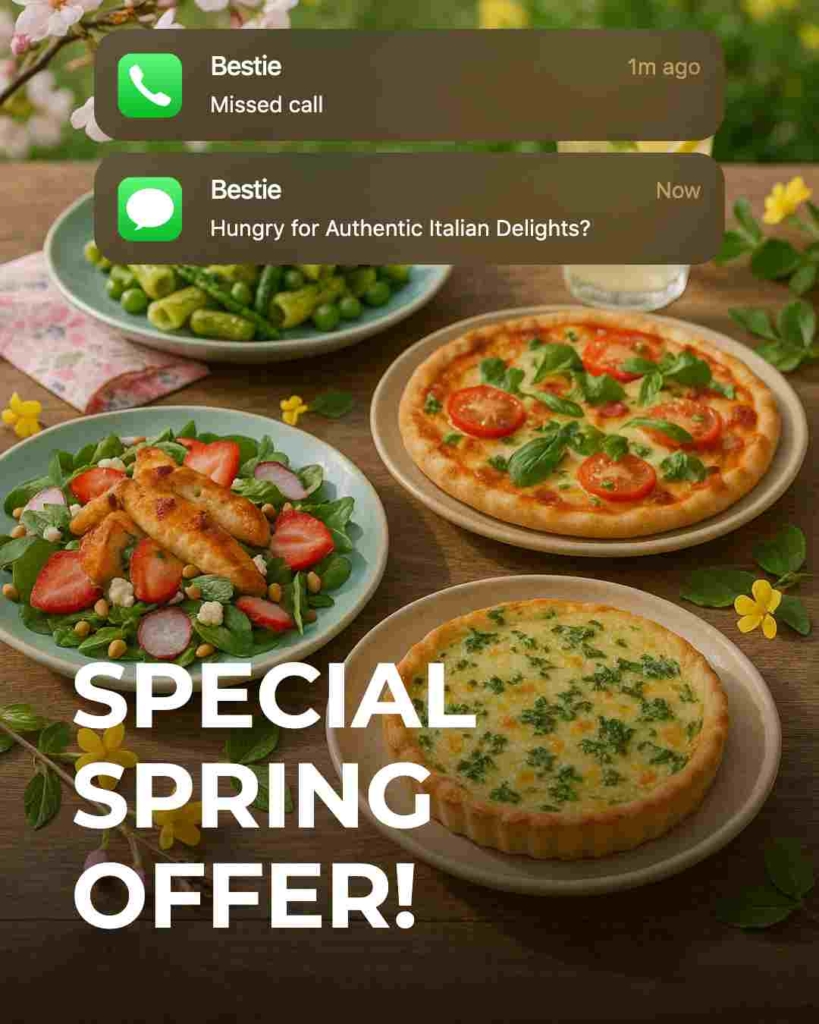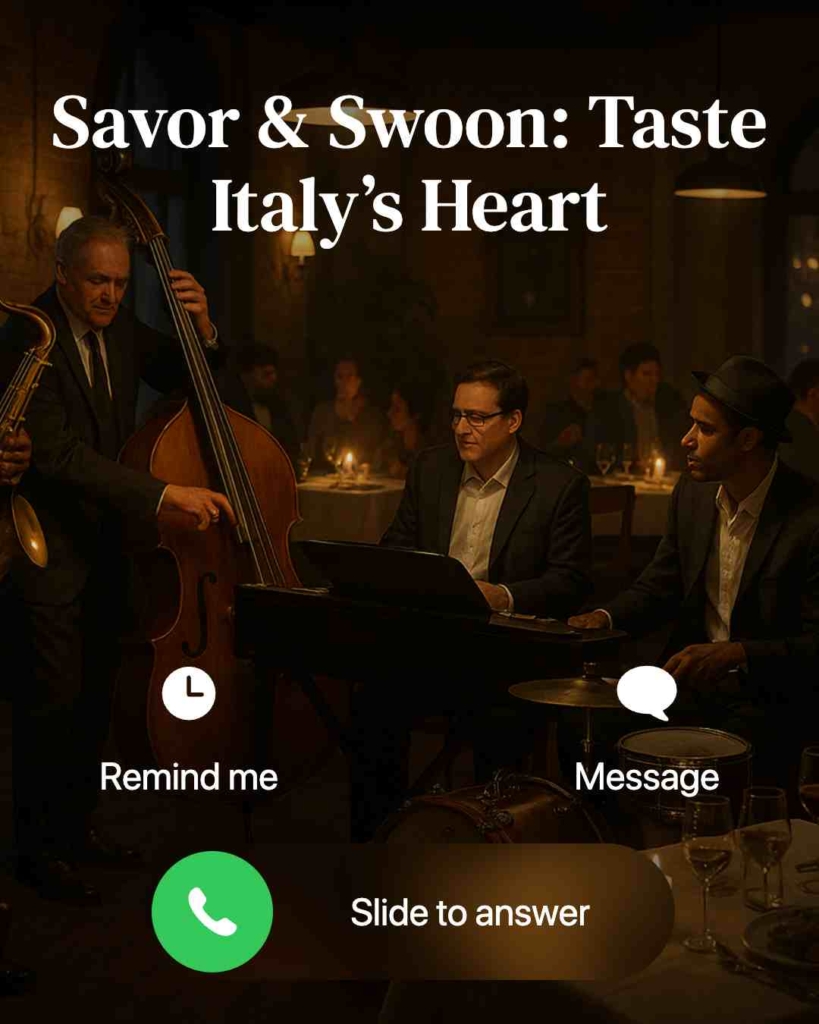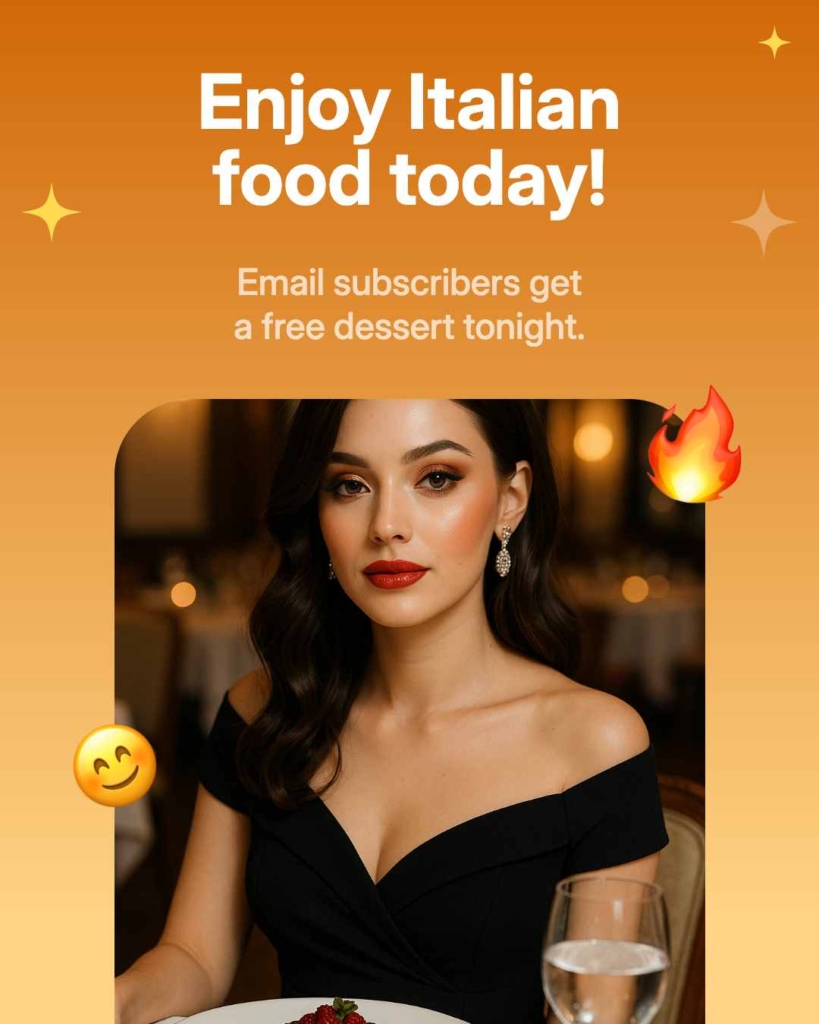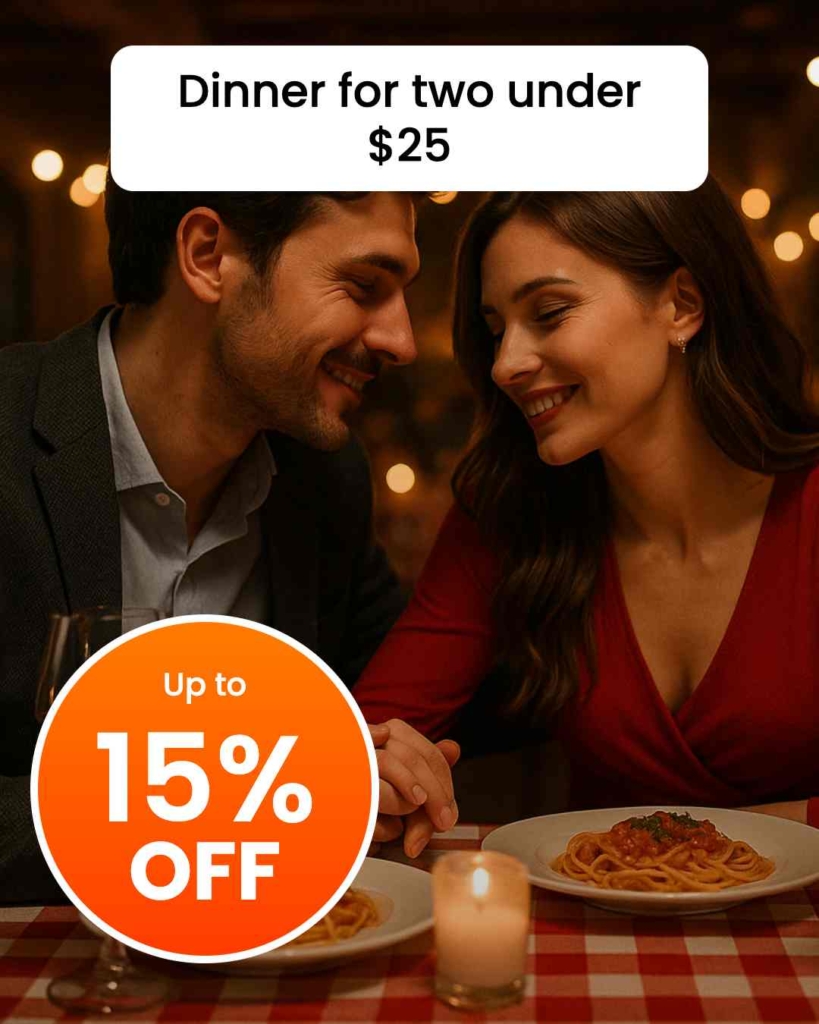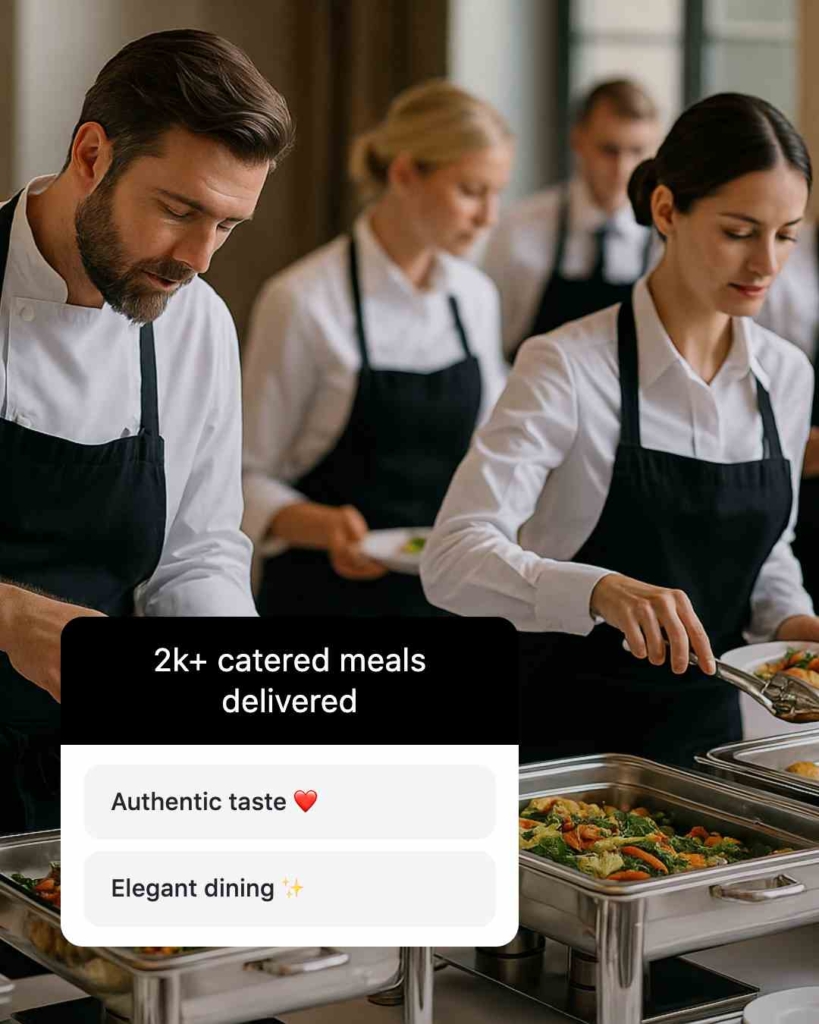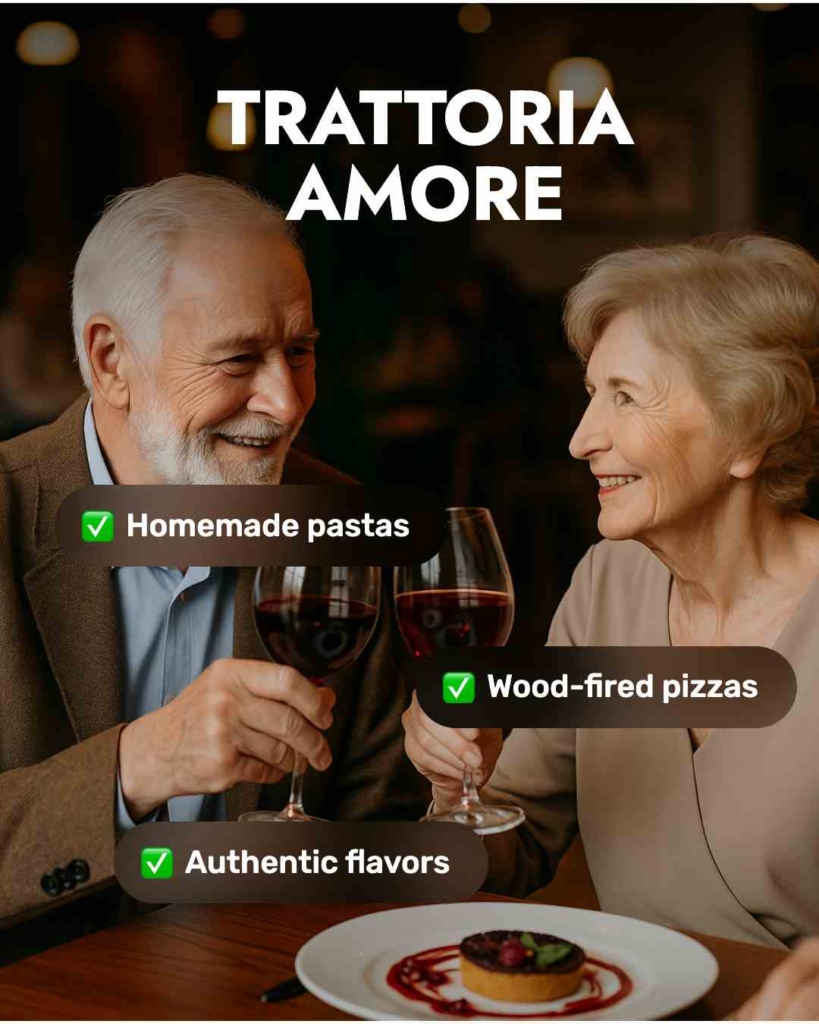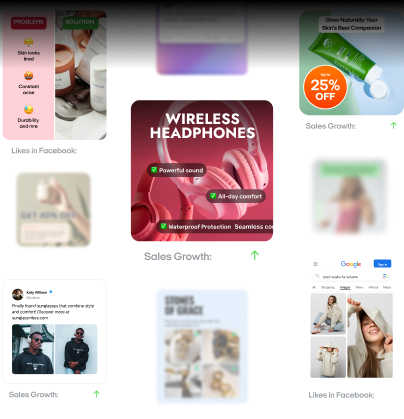Facebook advertising for restaurants: 5 proven strategies & best cases
Want to turn hungry scrollers into loyal diners? Zeely AI uncovers five data-backed Facebook ad strategies and real restaurant success stories.
Facebook ads for restaurants buy predictable, local reach inside a tight geo radius, then turn it into online orders and reservations with smart offers and clean tracking. And because 84% of diners choose a restaurant less than an hour before the meal, timing matters — Feed/Reels delivery catches nearby people in the decision window, geo targeting keeps spend tight, and the KPI chain shows exactly where to optimize. Use this channel to fill slow nights, launch new locations, and scale what works with proof in your dashboard, not guesses.
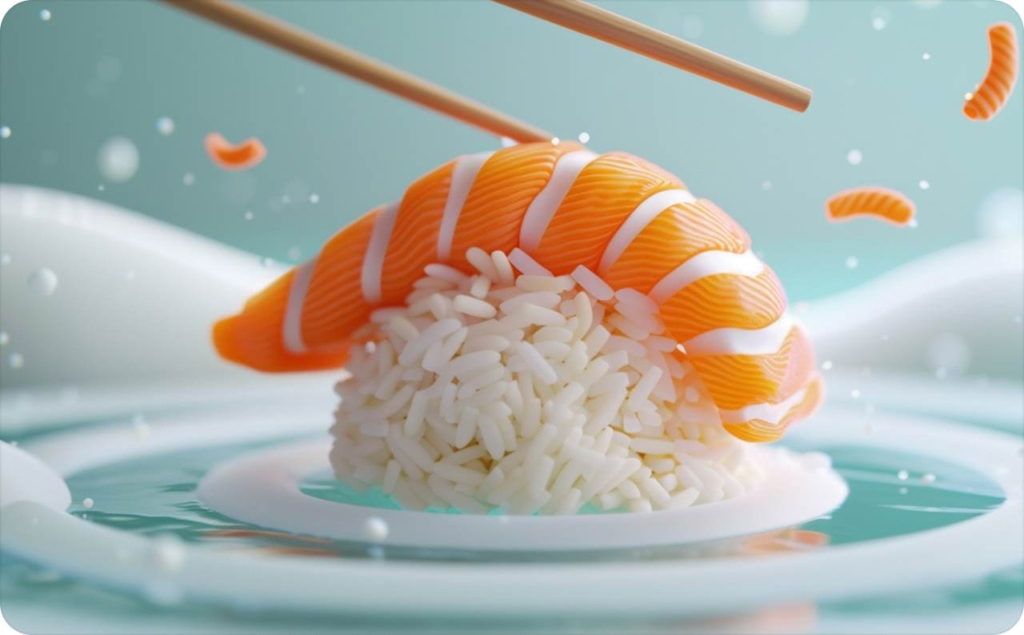
Why you need to use Facebook ads to promote your restaurant
Slow nights, soft launches, and seasonal dips all share one cause: not enough local demand on the right days. That’s why use Facebook ads for restaurants. You buy predictable reach inside a tight geo radius and turn it into orders and reservations. The benefits of Facebook ads for restaurants show up fast when offers, targeting, and tracking work together.
How the system drives results
Meta placements in Feed and Reels find nearby diners quickly. Set a geo radius around your address and anchor creative with map pins and landmarks. Use click-based attribution windows to judge impact. Feed first-party data, like POS lists, email subscribers, to warm up delivery. Add UTM tracking to every ad so Analytics and your ordering or reservation platform report the same story.
What problems this solves
- Slow weeknights → dayparted promos and “seat-filler” bundles
- New location → fast, local awareness within days
- Thin reservations → direct traffic to your booking flow with a clear “Book now” CTA
- Seasonal dips → limited-time menus and countdown creative to restore urgency.
Before → After in 2–4 weeks typical
- CTR: 0.7% → 1.6%
- CPC: $1.20 → $0.70
- CVR to order: 3% → 6%
- CPA/order: $40 → $12–$18
- Reservations: +2–3× on the same budget
Improve CTR with UGC and time-bound offers to drop CPC. Tighten your menu page and checkout to lift CVR.
5 proven tactics for restaurant Facebook ads
Stop guessing and ship what works. These restaurant Facebook ad strategies combine clear offers, urgency/scarcity, DCT creative testing, broad + retargeting, and smart dayparting to turn local reach into orders and reservations, making effective ads suitable both for restaurants and coffee shops. Use them like playbooks — launch fast, watch CTR, add-to-cart, orders, and reservation CVR, then scale winners and rotate the rest.
Strategy 1: Launch seasonal specials
Season drives appetite. Seasonal restaurant ads win when the offer is real, urgent, and easy to redeem. Run a limited-time offer tied to a holiday menu promo, then let Meta optimize delivery to hungry locals.
Offer-native storytelling
Lead with the dish and the deadline. Show the seasonal menu, add a date badge, and say “limited slots.” Pair the message with dayparting, so people see it when they’re deciding dinner.
Discovery mechanics that actually work
Keep targeting broad in a 1–5 km geo radius. Layer retargeting for site visitors and engagers. Use DCT tests to rotate 3–5 image/video variants. Let ACB funnel budget to winners as CTR climbs and CPC drops.
A simple weekly cadence with clear pillars
Ship fresh creative every week: hero dish close-ups, chef plating reels, countdown frames, and price/portion overlays. Anchor each post with a map pin or neighborhood callout. Align with event calendars to ride existing demand.
Engagement that builds momentum
Prompt saves and shares: “Tag your Friday crew.” Repost diner UGC to stack social proof. Mention a small perk for early bookings, like “First 20 tables get a free appetizer”, to sharpen urgency without killing margin.
Handle UGC with care and consent
When guests post the LTO, ask before you repost. Credit the creator, keep edits minimal, and file approvals in a shared folder. Clean UGC beats polished studio shots for this format.
Strategy 2: Promote restaurant entertainment
Events turn scrollers into diners. Live music ads, trivia night ads, and chef pop-ups shift idle attention into bookings fast, local, and measurable.
Event-native storytelling
Treat the event like a micro-launch. Lead with the headliner, date, and start time. Add a “Book a table” or “RSVP” CTA. Use a schedule card that includes the lineup and a clear value hook, like happy-hour window, set menu, or cover waived with reservation.
Discovery mechanics that actually work
Start radius-based broad within 1–5 km for awareness. For bigger acts, expand the radius by +2–3 km. Build reminder ads 24–48 hours pre-event to retarget engagers and site visitors. Keep one evergreen ad set warm; swap in new creatives each week.
Ship a weekly cadence with clear pillars
Run a simple rhythm:
- Mon/Tue: announcement post
- Thu: countdown creative with headliner tile
- Fri afternoon: last-call reminder with table availability. Assets: 15–30s video teaser, schedule card, map pin, and brief parking or transit note
Build momentum with engagement
Ask performers to share the ad. Offer a small perk for early reservations, for example, “first 15 tables get a sampler”. Collect short clips from sound check for Stories/Reels. Nudge UGC: a photo spot or branded backdrop makes sharing natural.
Handle RSVPs and UGC with consent
Confirm permissions before reposting fan videos. Credit creators. Keep edits light. Track RSVPs in a simple sheet or your reservation platform so staff can forecast covers.
Strategy 3: Reward existing customers
Warm audiences buy faster and cheaper. Treat them like VIPs and your repeat revenue climbs.
Loyalty-native storytelling
Lead with the perk and the deadline: “Members get 15% off this week” or “Email subscribers get a free dessert tonight.” Add review proof or a star badge to anchor trust.
Targeting mechanics that actually work
Upload POS/email lists as custom audiences. Cap frequency at 2–4/week so you don’t burn goodwill. Exclude last-7/14-day buyers to avoid waste. Keep one broad awareness set live; run retargeting to recent site visitors and engagers.
Ship a simple cadence with clear pillars
Weekly: 1 perk post, 1 reminder, 1 UGC spotlight. Rotate perks — starter, dessert, bundle, early-bird seating. Use DCT tests to try three creatives per perk; let winners roll while you refresh laggards.
Build momentum with smart incentives
Make redemption brain-dead simple: short coupon code, scannable QR at the host stand, and a clear end date. Offer a small surprise for the top referrers to spark shares without discounting everything.
Handle data & consent the right way
Get permission before reposting customer photos. Store approvals in a shared folder. Keep your first-party data clean, like merged duplicates, recent opt-ins, so lookalikes stay high-quality later.
Strategy 4: Unleash new sales with your customer list
Your customer list is a growth engine. Lookalikes turn your best buyers into more diners who act like them fast and at a lower CPC.
Growth-native storytelling
Lead with a new-customer bundle or first-order perk. Keep the math simple: “Dinner for two under $25” or “First order ships free.” Make the benefit obvious in the first line and the first frame.
Discovery mechanics that actually work
Seed matters. Build a LAL 1–2% from high-value buyers. Run it against broad in a split to see which wins. Add a suppression list for last-30-day buyers. Pair with a warm retargeting set for site visitors and social engagers. Let ACB shift budget toward the cheaper CPA.
Ship a simple testing cadence
Use DCT tests to try 3–5 variants at once: UGC dish close-ups, family bundle visuals, and a price/portion overlay. Keep one control creative stable each week so you can read lift clearly.
Build momentum with trust & clarity
Stack trust badges — 4.6 rating, “5k+ local orders”, and a short value prop — “Hot in 25 minutes. No fees on pickup.” Use scarcity sparingly: “Ends Sunday” is enough to move fence-sitters without cheapening the brand.
Handle data with consent and quality
Refresh seed lists monthly. Remove stale emails and bounced contacts so lookalikes stay sharp. Document consent for any UGC you feature; store approvals in a shared folder.
Strategy 5: Grow restaurant catering
Catering evens out slow periods and lifts AOV. Treat it like a B2B product with clear pricing, fast replies, and low-friction lead capture.
Catering-native storytelling
Lead with certainty: tray sizes, price per head, delivery/pickup windows, and minimums. Offer a simple “Get a quote” CTA plus a downloadable catering planner — menu + headcount calculator.
Discovery mechanics that actually work
Run weekday dayparting when office managers and coordinators plan meals. Use lead forms for speed or phone call objective for hot intent. Retarget visitors who viewed “Catering” or your menu’s group-order section.
Ship a simple testing cadence
Use a carousel that tells a story: Hook → Best-seller trays → Price per head → CTA. Test 3–5 variants with DCT — varied tray photos, portion guides, delivery badge. Keep one control creative to read lift.
Build momentum with value & clarity
Publish a menu PDF/price grid up front. Highlight perks: free setup, dietary labels, on-time guarantee. Add trust signals — star rating, “2k+ catered meals delivered”.
Handle leads fast
Pipe leads to your CRM or shared inbox. Aim to reply within 30 minutes during business hours. Use a short template for quotes and a one-click reorder link for repeats.
Choose the right Facebook ad types for your campaigns
Pick formats that match intent. The best Facebook ad types for restaurants are single image, video, and carousel. Use Advantage+ placements to scale delivery, then judge winners by thumb-stop rate, 3-sec video views, and outbound CTR.
Single image ads
A single-image ad is a unit that highlights one dish or offer in your restaurant Facebook ads. You use it to introduce the special, spark appetite fast, and move diners to order or book.
Format: 1080×1080 plate close-up with a price badge and clear CTA. Use minimal text overlays, respect safe zones, add light background blur, and keep brand colors consistent. Optional: small map pin or neighborhood tag.
Why it works: This format leverages instant recognition. A single pause or click acts as a clear intent signal, helping Meta’s delivery match the ad to high-intent diners. Food-forward, high-contrast visuals drive lower CPC and stronger relevance, while the simple layout lets DCT identify winners quickly and keeps Advantage+ placements efficient.
When to use this format:
- Quick promos, LTOs, lunch rush specials
- Price-led bundles or “Dinner for two” offers
- Retargeting cart/menus viewers who need a nudge
- Low production time; you can ship 3–5 variants today
- Building evergreen ads for top-selling dishes
Video ads
A video ad is a type that showcases your food in motion. You use it to stop the thumb, build desire fast, and move diners from interest to order or reservation.
Format: Cut 1:1 and 4:5 versions. Hook in 1 second — sizzle, steam, pour, cheese pull. Add captions for silent autoplay. Cue ideas: chef prep, quick menu reveal, happy table moment, UGC shoutout.
Why it works: Motion triggers instant appetite cues and stronger thumb-stop. Each view and replay signals intent, helping Meta route delivery to high-intent audiences. Clear first frames raise view-thru CTR and give DCT enough signal to crown a winner quickly.
When to use this format:
- Awareness + persuasion for launches and LTOs
- Signature dishes that shine in motion
- Social proof moments
- You need reach today and retargeting fuel tomorrow
Carousel ads
A carousel ad is a unit that showcases multiple dishes in sequence. You use it to guide diners through your menu, surface an offer, and move them to order or book with clear next steps.
Format: Arrange cards in this order: Hook → Best-seller → Offer → CTA. Extend with categories or a “dinner for two” bundle. Show price per item or per head on each card. Keep visuals consistent and legible on mobile.
Why it works: Step-by-step visuals create momentum. Each swipe is an intent signal, helping delivery find people who browse and buy menus. Clear pricing and a structured story raise card-level CTR and prime visitors for deeper clicks, which improves downstream CVR.
When to use this format:
- Multi-dish showcases and menu carousels
- Bundles and combo deals that lift AOV
- Seasonal menus where variety matters
- Retargeting visitors who viewed multiple dishes
5 best restaurant Facebook ads examples
Need ideas you can ship today? This swipe file shows restaurant Facebook ad examples that map straight to execution. Expect tight hooks, visible social proof, crisp offers, and CTA patterns you can copy, and track the impact.
Chipotle: “Guac Mode” member-only freebie
Chipotle framed a loyalty perk as a limited-time unlock — “Guac Mode Activated”, using a single high-contrast keyword visual and one clear action: join Rewards. The post read like a switch you flip for free guac, creating instant FOMO and near-zero cognitive load in the feed.
Strategic impact
- This was list growth first, orders second: convert scrollers into known members, then monetize with pushes and offers
- “Member-only” + countdown reframed guac as access, not discount—stronger perceived value
- A one-word graphic owned the scroll stop; plain language and minimal copy improved comprehension on small screens
Performance outcomes
- Higher join-rate vs. generic loyalty promos thanks to a time-boxed “unlock”
- Lift in downstream order frequency from new members via email/app notifications
- Cheaper paid delivery: broad interest targeting + thumb-stopping creative improved relevance and CPMs
Takeaway
Ship a loyalty ad that behaves like a toggle: one bold keyword, a single-line benefit, and one sign-up CTA. Time-box it to spark FOMO, tag UTMs to the Rewards join flow, and retarget joiners with a first-order upsell to turn member sign-ups into same-week revenue.
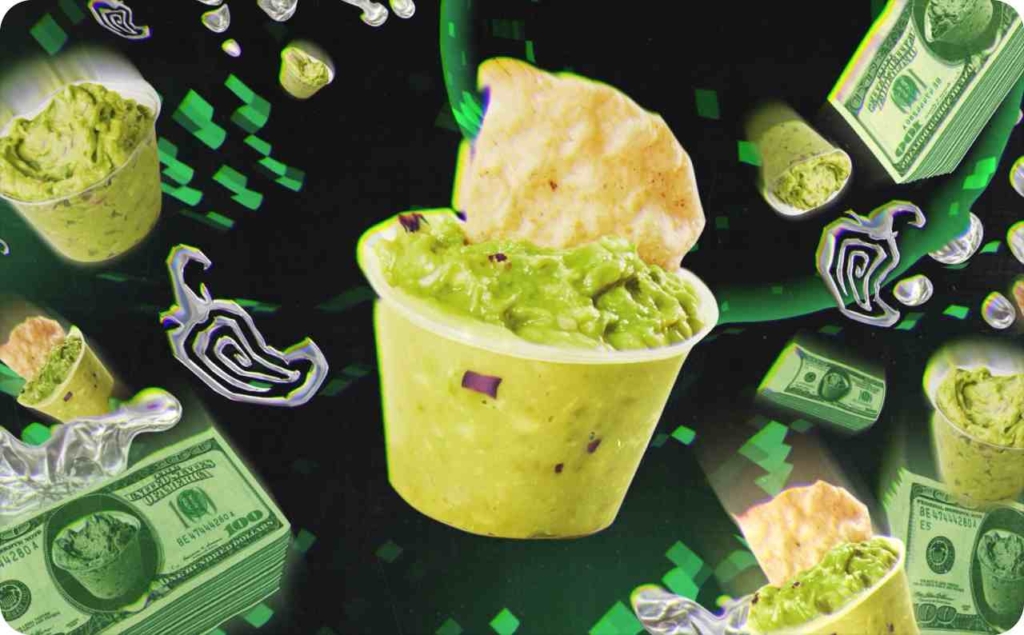
Photo source: Chipotle
The Goat & Vine: “Free Bottle With Dinner” urgency offer
Goat & Vine led with a concrete perk, like a free bottle of wine, paired with multiple “Reserve now” CTAs and location call-outs. The value was obvious at a glance, and the path to act was short, which is why the ad reads as a classic demand-activation play for dine-in reservations.
Strategic impact
- This was value-forward persuasion
- The headline perk removed price friction and created instant motivation
- Multiple CTAs and listed locations reduced decision friction for nearby guests
Performance outcomes
- More qualified clicks from local diners primed for dine-in
- Higher outbound CTR vs. generic brand creative
- Comment quality improved, signaling stronger intent and aiding delivery
Takeaway
When you need reservations fast, ship a visible, one-line perk with a deadline and duplicate the CTA above the fold. Add location tags to localize intent, and drive to a reservation page with UTMs so you can read CTR → CVR and CPA/order cleanly.
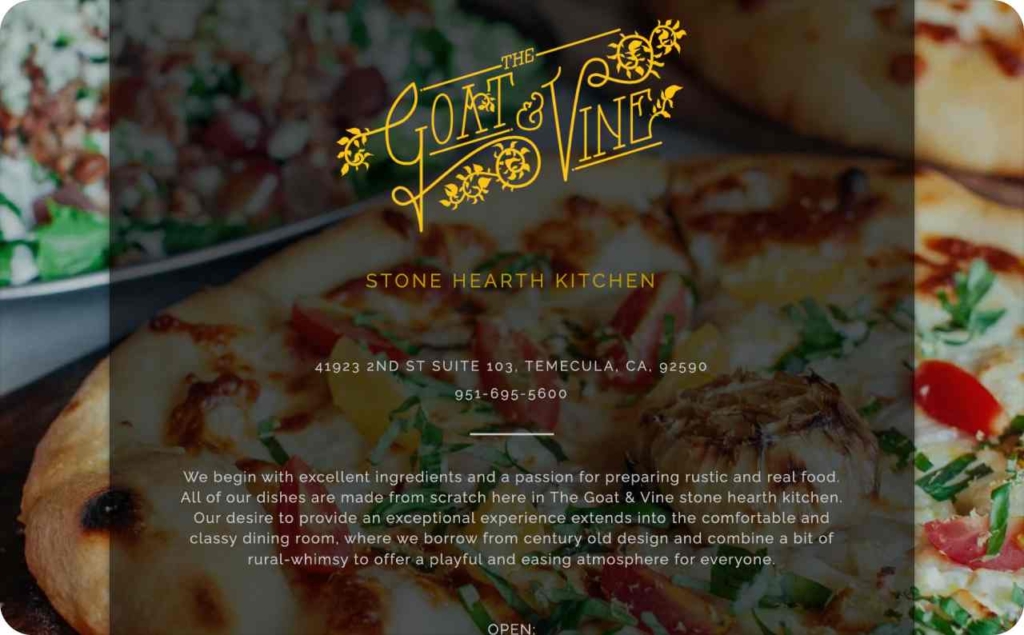
Photo source: The Goat & Vine
Caipirinha happy hour: Cultural story + half-price hook
This ad leads with the Caipirinha’s identity as Brazil’s national cocktail, then ties it to a half-price happy hour and a central-city location. The mix of culture + value gives casual scrollers a reason to stop, learn, and try right now.
Strategic impact
- This was storytelling with a timer
- The origin line built novelty and credibility, while “half price during happy hour” added urgency
- Local anchor narrowed intent to nearby guests ready to visit
Performance outcomes
- Stronger thumb-stop from culture + price in the first line
- Outbound CTR lift vs. plain drink shots; CPC eased as relevance rose
- Quality engagement in comments, which improved delivery and lowered promotion cost
Takeaway
For the best restaurant FB ads, frame one signature item with micro-education, add a visible time window, and pin the neighborhood. Use a tight CTA and drive to a menu/reservation page with UTMs so you can read CTR → CVR and CPA/order cleanly.
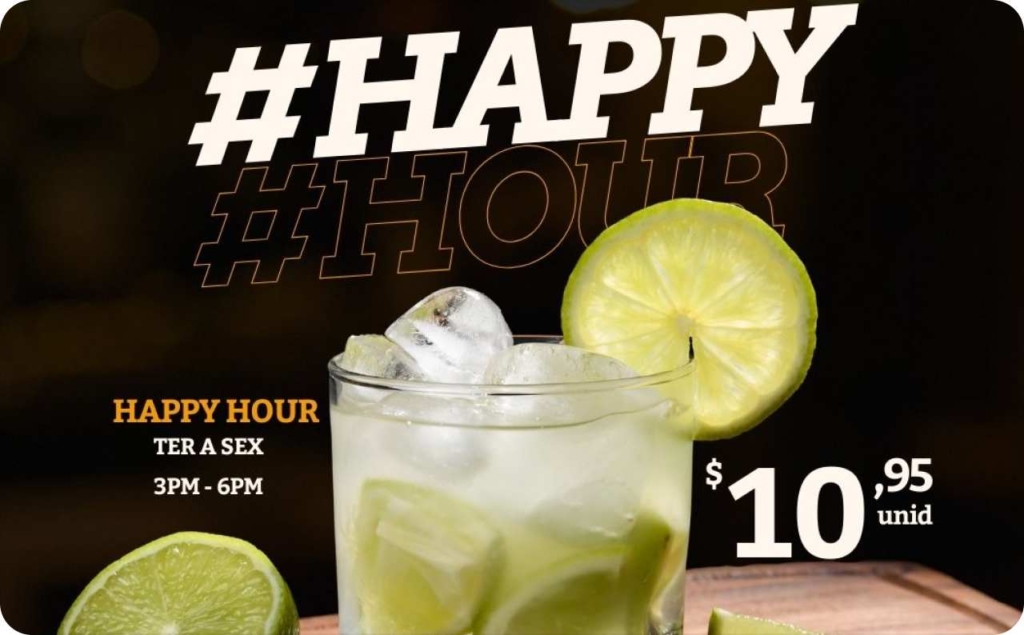
Photo source: Boteco Brazil
Grilled Branzino: witty signature-dish ad
A beautifully plated Grilled Branzino steals the scroll, then a playful line — “Excuse me while I interview this for a position in my belly ;)”, adds personality. Clear branding plus dual CTAs give viewers two clean next steps, from discovery to deeper intent.
Strategic impact
- This was product desire with brand voice
- The hero dish built appetite; the humor made it memorable and human
- Prominent branding anchored recall, while dual CTAs split paths
Performance outcomes
- Higher thumb-stop from motion-adjacent cues and witty copy
- Outbound CTR lift as “Learn More” attracts menu-curious visitors; “Visit Instagram” builds retargetable warm traffic
- Save and share behavior improves delivery quality and can lower CPC over time
Takeaway
Lead with one signature plate and a five-word personality hook. Keep branding visible, add two CTAs for different intent levels, and route to a fast menu or profile. Track CTR, saves, and downstream CVR; refresh the line weekly to avoid fatigue while the visual stays consistent.
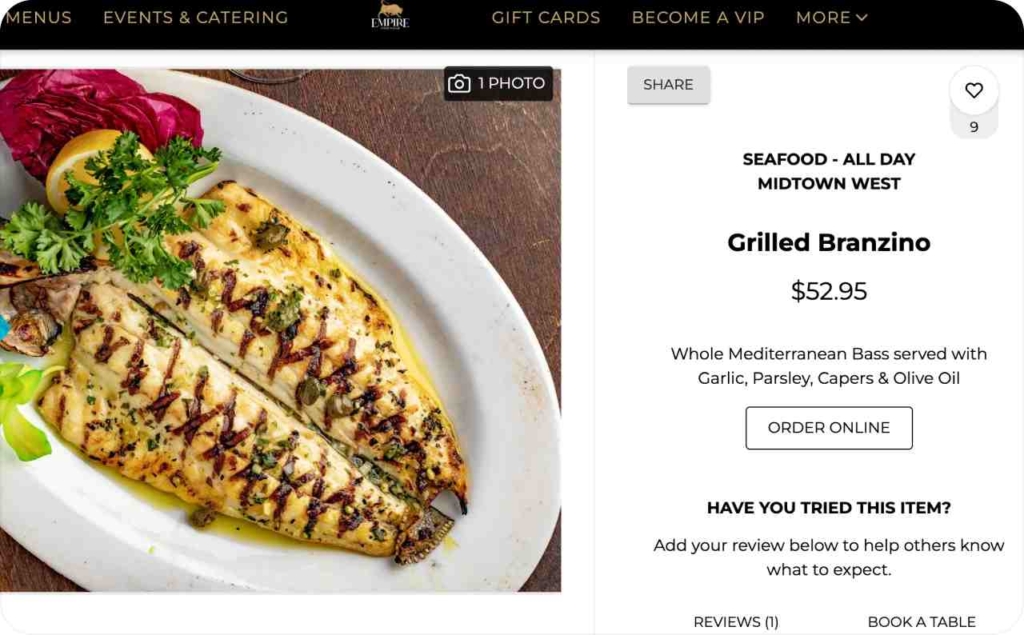
Photo source: Empire Steak House
Edessa: “Customer Voices” testimonial collage
Edessa turned real diner quotes into swipe-stopping proof. A clean collage layout, consistent color theme, and short testimonials frame the experience as trusted and repeatable, so cold audiences borrow confidence from peers before they click.
Strategic impact
- This was social proof packaged for speed
- Concise quotes + branded tiles reduced cognitive load and built credibility fast
- Testimonials mapped to real objections, not fluff
Performance outcomes
- Longer on-ad dwell as people pause to read
- Outbound CTR lift vs. generic food-only posts
- Quality reactions/saves that improve delivery and ease CPC over time
Takeaway
Let customers talk. Curate 3–5 quotes under 15 words, pair each with a dish or ambiance shot, add a first name + neighborhood for local relevance, and end with one clear CTA. Keep the color system consistent so recognition compounds across campaigns.
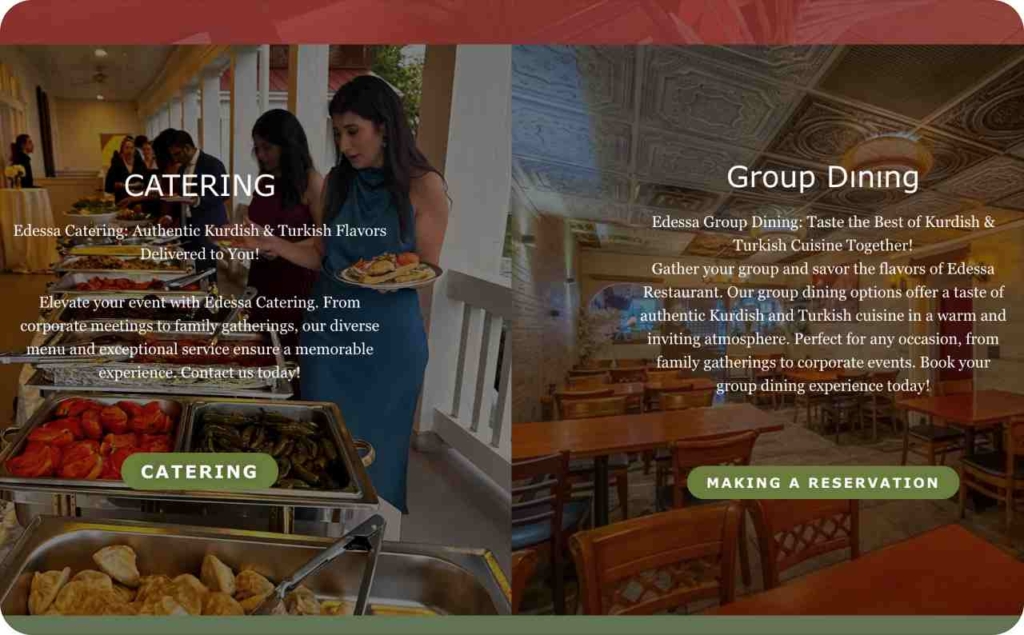
Photo source: Edessa
Reasons to use AI ad generator for Facebook restaurant ads
Restaurant ads have to drive orders, not guesswork. Zeely is an AI-powered ad tool with 100+ templates and 150+ AI avatars built for SMBs, marketers, and e-commerce teams. It turns menu photos and ideas into on-brand campaigns fast, so you can focus on service and business growth with an AI creative generator for ads that actually ships results.
Pain points and How Zeely fixes them
- No time. Zeely cuts production from hours to minutes with ready-to-use creative templates and instant size/ratio variants
- No design team. Auto-layout, image enhancement, and plate-close-up presets make anyone look pro
- Writer’s block. Copy variations generate headlines, captions, and CTAs tuned to offers, events, or LTOs
- Low budget ads. Budget suggestions allocate $10/$20/$50 ladders and pacing rules to hit CPA/order goals
- Campaign complexity. One workflow of automated ad creation builds image, video, and carousel assets, picks Advantage+ placements, and ships them with a click
- Slow testing. DCT-ready bundles spin 3–5 variants at once; results roll up so you can scale winners faster
- Wasted ad spend. Performance predictions flag weak creative before launch; the system steers budget to high-CTR, high-CVR options
Zeely removes the barriers that slow restaurant advertising. You get speed, consistent branding, and smarter decisions in one AI ad maker, so time saved goes up, CPC goes down, CVR climbs, and testing throughput accelerates. It’s cost-efficient, accessible, and built to turn creative into orders.
Conclusion
Winning with Facebook ads for restaurants is a system. You matched formats to intent, ran offers that create urgency, and used the KPI chain to steer budget toward winners. The playbooks give you repeatable ways to fill seats and boost orders.
Roll it out with discipline: launch small, ship 3–5 DCT variants, tag everything with your UTM kit, and refresh hooks weekly. Save what works as reusable restaurant ad templates so each promo gets faster and cheaper to run.
You may also like
Also recommended
